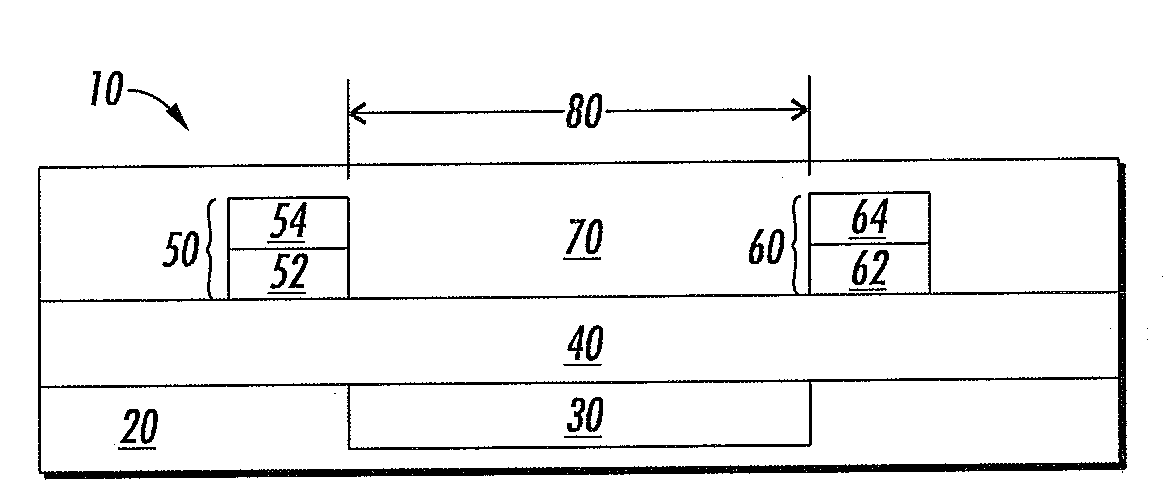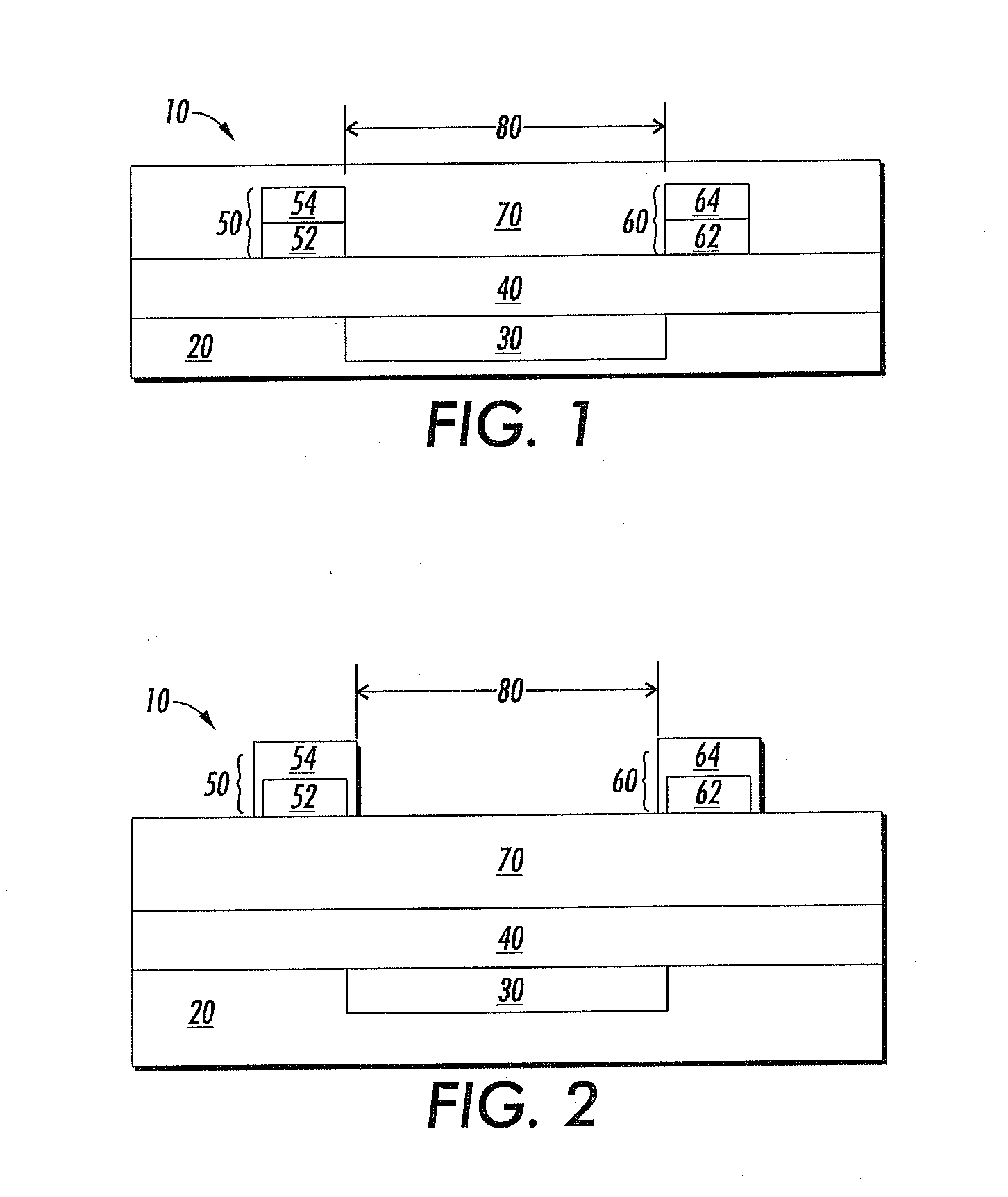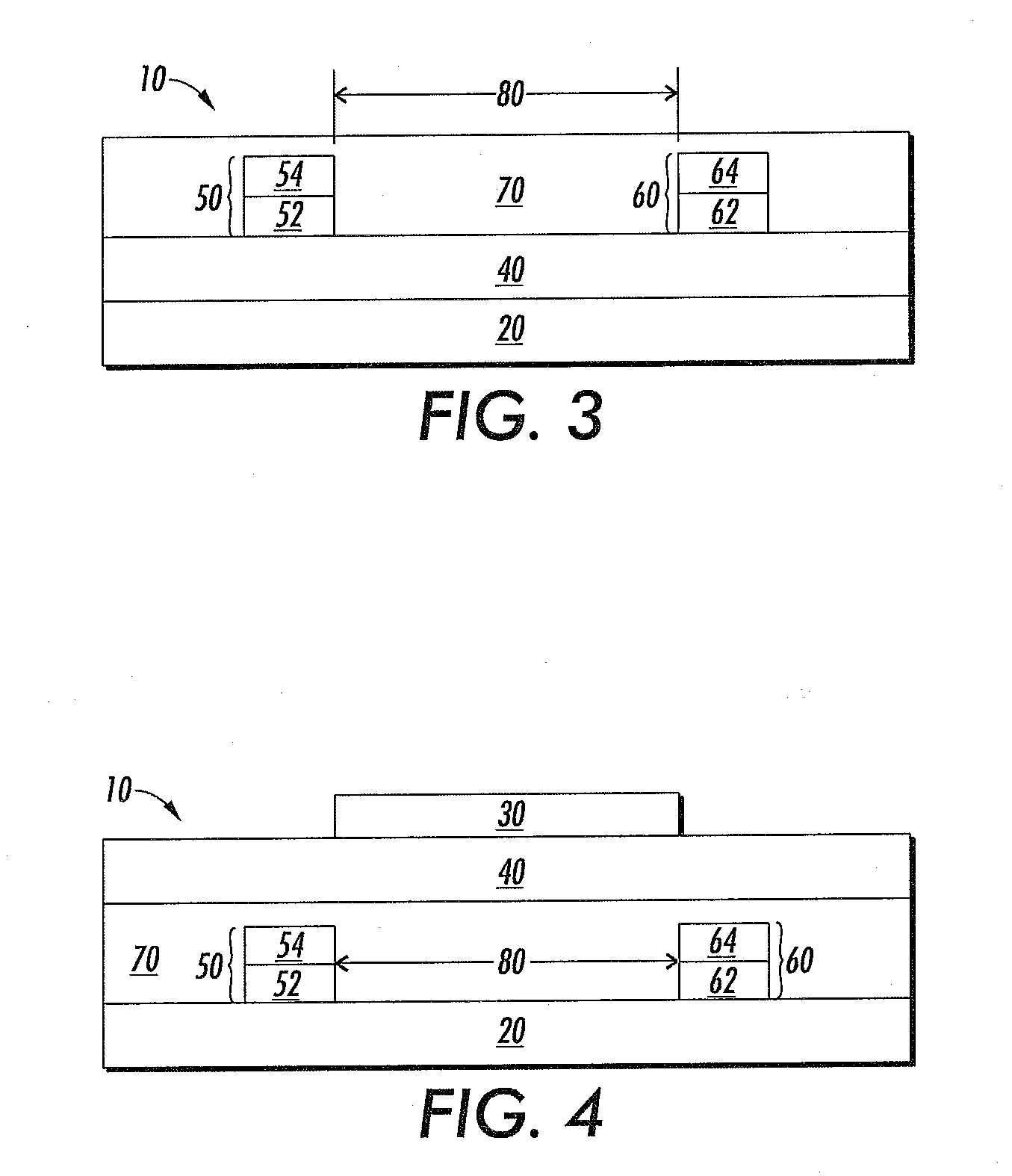Organic thin film transistor with dual layer electrodes
- Summary
- Abstract
- Description
- Claims
- Application Information
AI Technical Summary
Benefits of technology
Problems solved by technology
Method used
Image
Examples
example 1
[0052]A bottom-contact thin-film transistor with a configuration illustrated in FIG. 3 was built. It comprised an n-doped silicon wafer with a thermally grown silicon oxide layer having a thickness of about 300 nanometers. The wafer functioned as the gate electrode. The silicon oxide layer functioned as the gate dielectric layer. A 10-nanometer layer of titanium was applied in two locations corresponding to the source and drain electrodes. This titanium layer was the first layer of the dual-layer electrodes. Next, a 100-nanometer layer of gold was applied to the titanium layers to form the second layer of the dual-layer electrodes. The semiconductor channel length (i.e. distance between the source and drain electrodes) was 5 microns.
[0053]The silicon oxide surface was modified with octyltrichlorosilane (OTS-8) by immersing the devices in 0.1 M OTS-8 solution in toluene at 60° C. for 20 min. The gold surface was then modified with octanethiol by immersing the devices in 0.01 M octane...
PUM
| Property | Measurement | Unit |
|---|---|---|
| Thickness | aaaaa | aaaaa |
| Thickness | aaaaa | aaaaa |
| Thickness | aaaaa | aaaaa |
Abstract
Description
Claims
Application Information
 Login to View More
Login to View More - R&D
- Intellectual Property
- Life Sciences
- Materials
- Tech Scout
- Unparalleled Data Quality
- Higher Quality Content
- 60% Fewer Hallucinations
Browse by: Latest US Patents, China's latest patents, Technical Efficacy Thesaurus, Application Domain, Technology Topic, Popular Technical Reports.
© 2025 PatSnap. All rights reserved.Legal|Privacy policy|Modern Slavery Act Transparency Statement|Sitemap|About US| Contact US: help@patsnap.com



